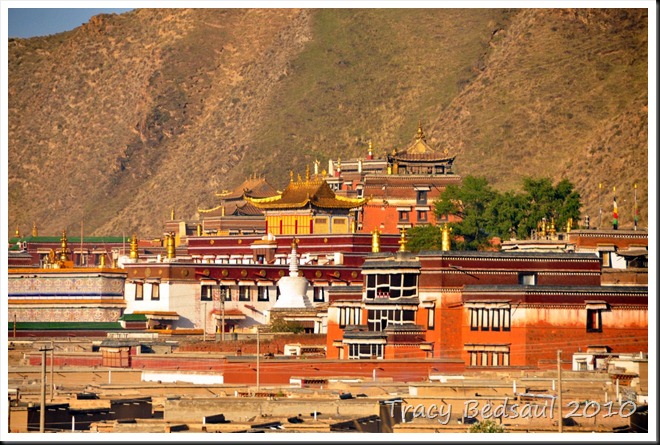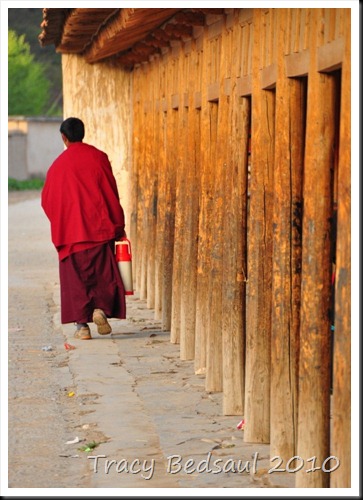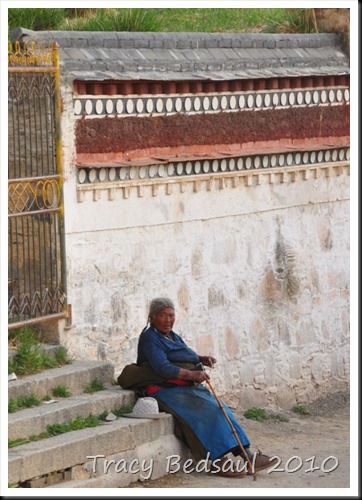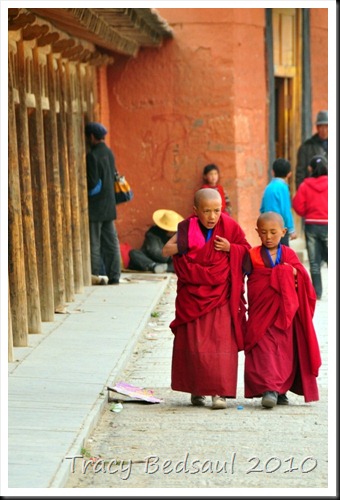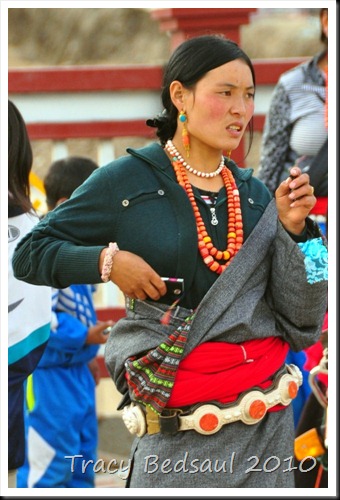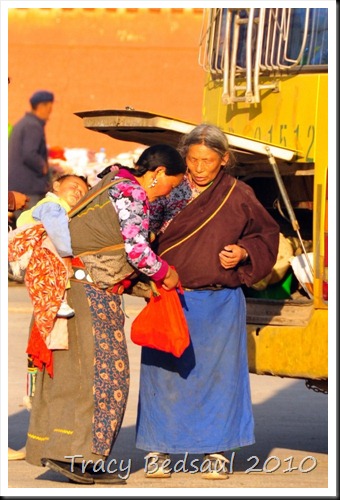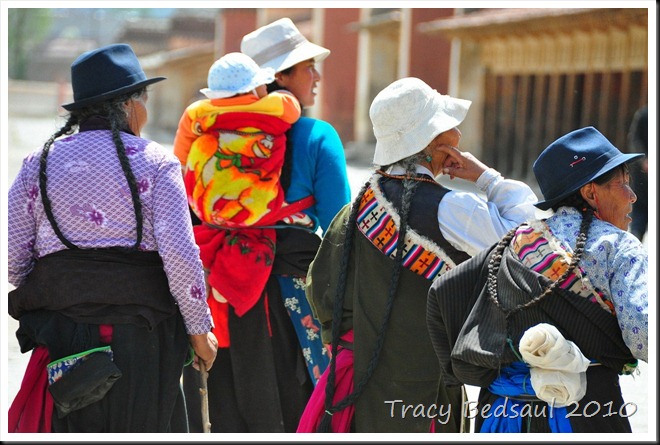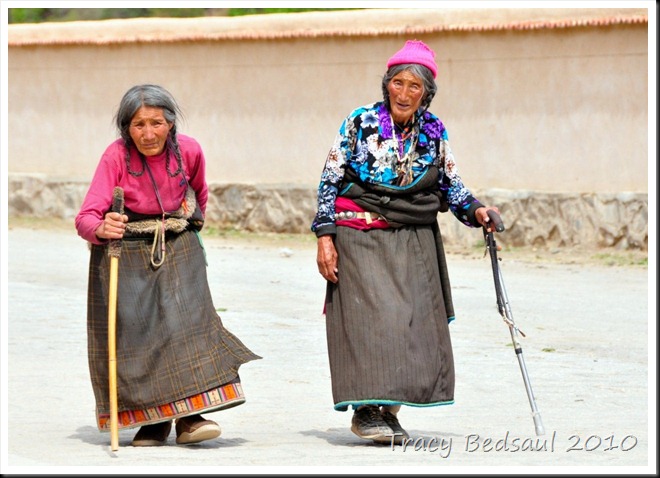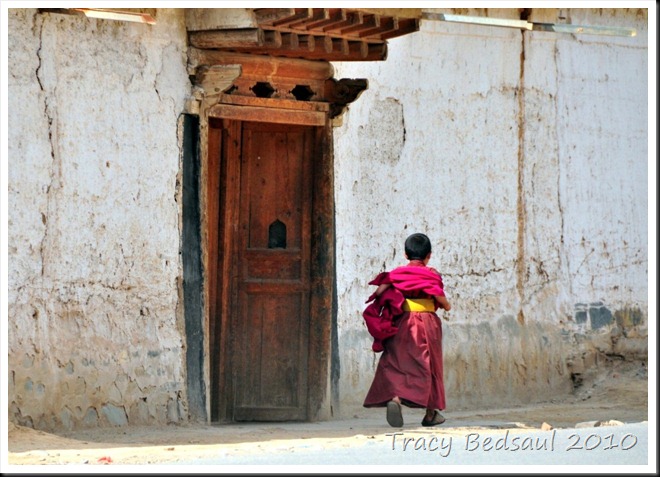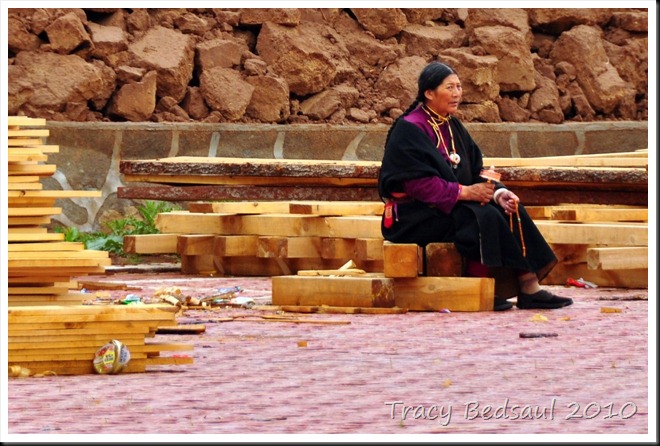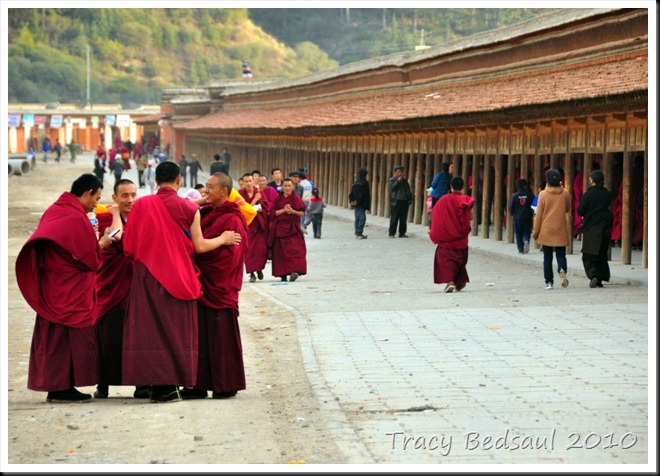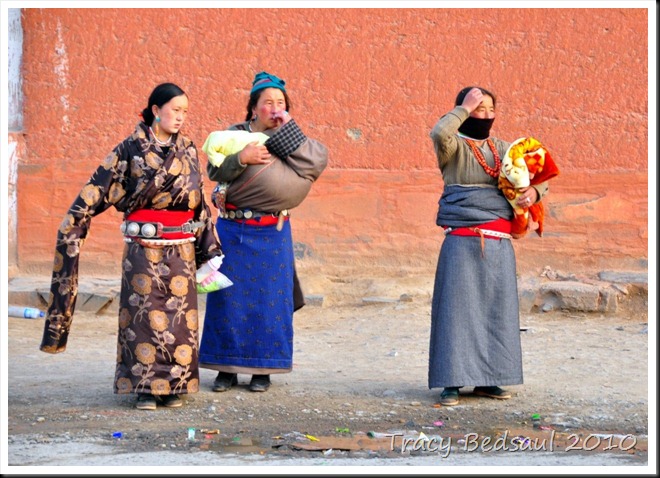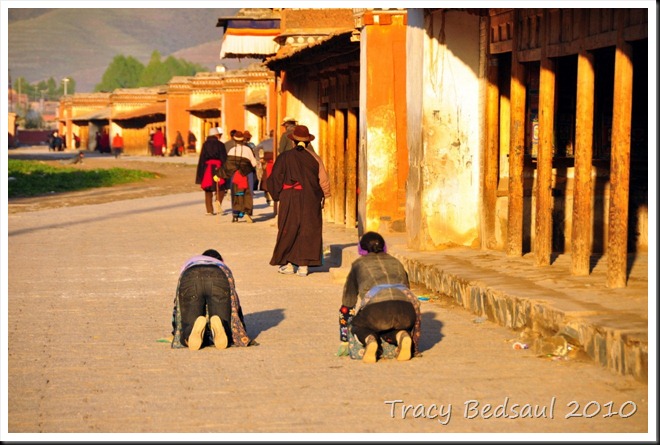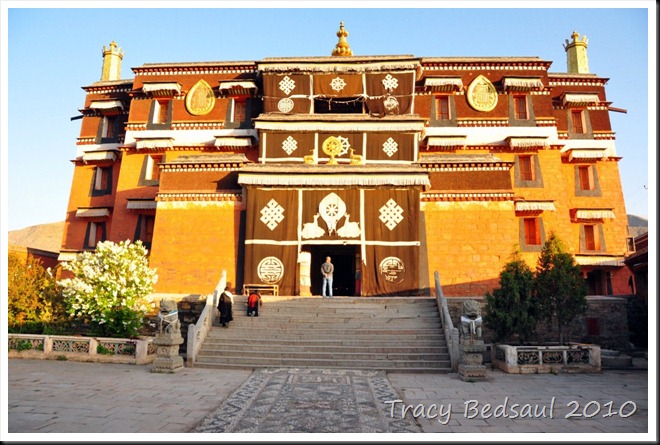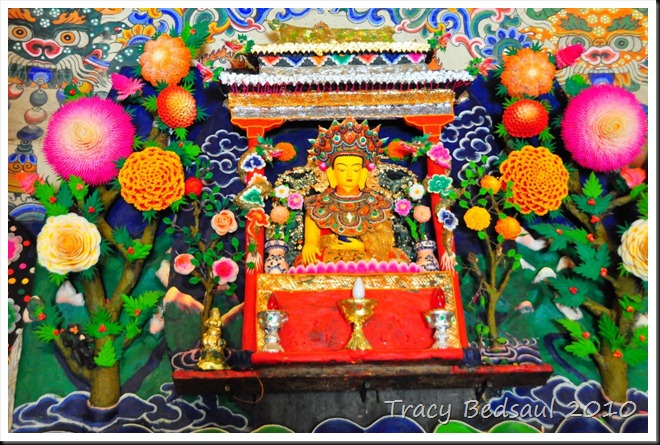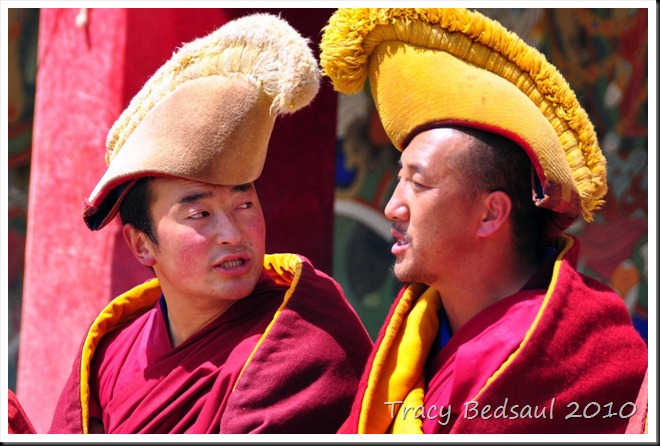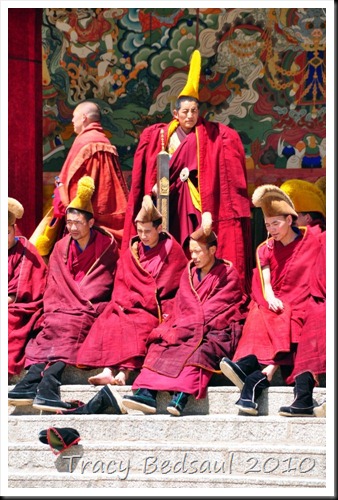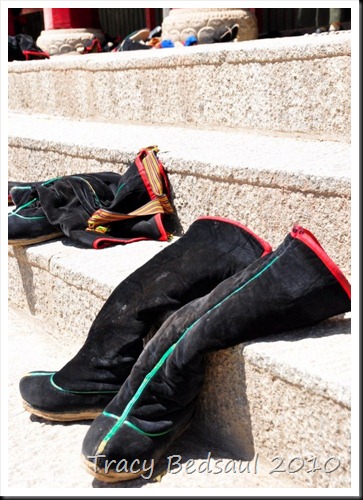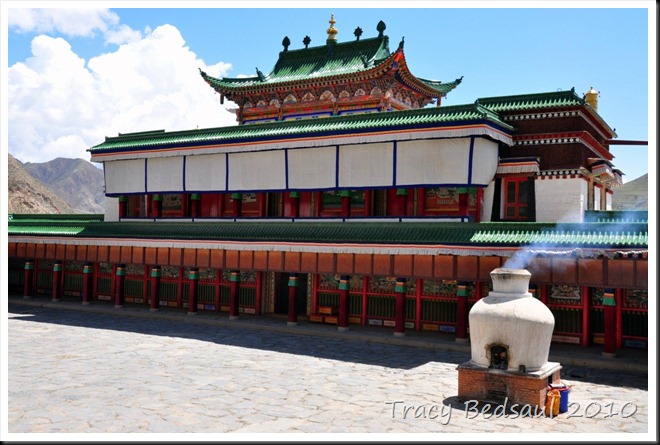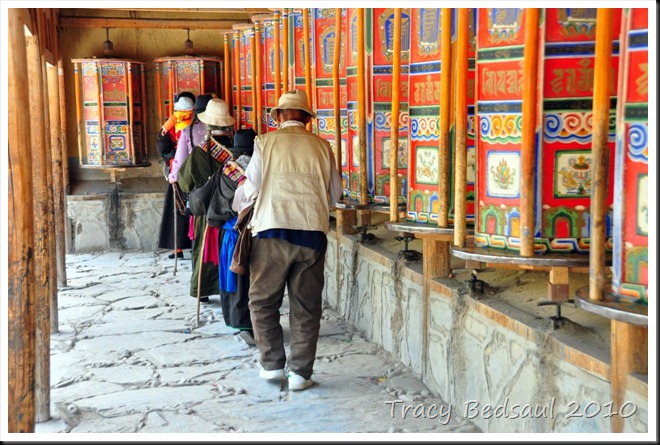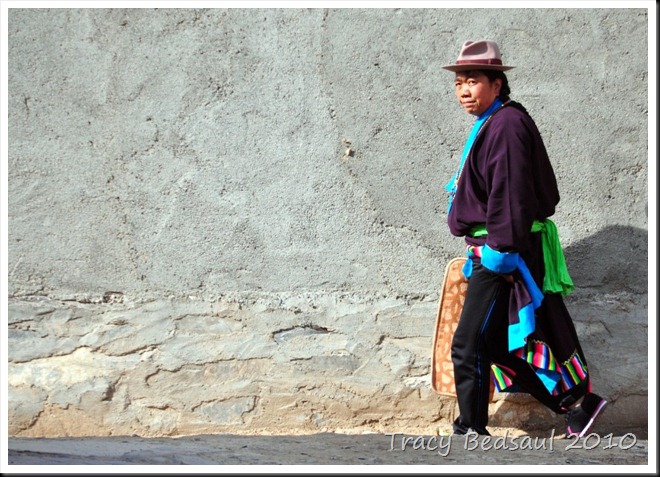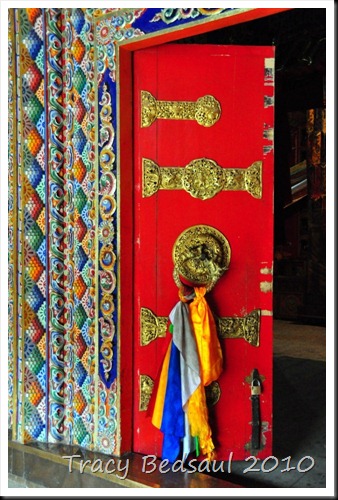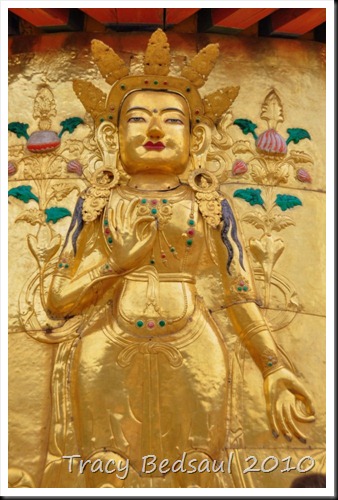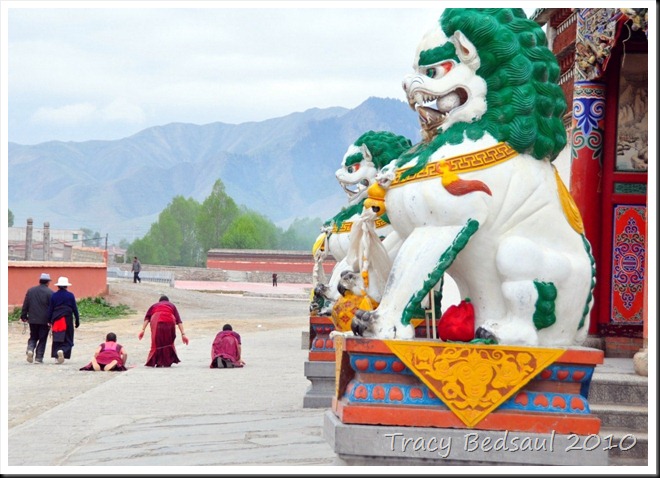Stats:
Destination: Tongren, China (Qinghai Province)
Number of Days Spent: 1 day
Where we stayed: We had originally thought of staying here for a night but opted to head on to Xining the same day so we could spend the time exploring around there instead.
Best restaurant: On the bus between Xiahe and Tongren don’t miss the yak yogurt! It’s deliciously creamy and tangy (at least Tracy thought so anyways).
Best of: We made the best of our time here by visiting a few more monasteries as well as shopping for the ‘perfect’ thangka (Tibetan art), a local man at the Rongwo Gonchen Gompa was especially friendly, giving us a quick tour of the massive complex
Worst of: Either the hotels in town didn’t want to take foreigners or they really were full – either way they were off putting and the one recommended in LP was the rudest of all (You Zheng Binguan). We had a hard time convincing someone just to watch our bags for a couple of hours so we could explore.
We took the only bus from Xiahe to Tongren at the wonderfully early hour of 6am. Despite the early hour of departure, we were rewarded with views of the valleys and mountains as well as a little snow as we went through the pass. Yes, it was June 1st and snowing. The snow quickly dissipated and after a quick stop to pick up yogurt – one of Tracy’s favorite food items in China, we arrived in Tongren around 10:00am. After some pleading with the hotel clerk, they finally agreed to keep our bags for the day and we were off to check out the Wutun Si Monastery.
Down the hill about 6km from town sits the Wutun Si Monastery. The monastery is actually split into two separate sections about 1km apart. The lower part was nearly completely under construction at the time of our visit and aside from the sound of a few electric saws and hammers, one might think the entire place was disserted. As with so much of China, this area appears to be a work in progress but the parts that were visible appeared to have received a recent coat of paint.
In between the upper and lower monasteries sits several artisan workshops. The area is famous for producing some of the highest quality Tibetan paintings, such as the one pictured at the beginning of the post, with commissions coming in from all over the Buddhist world. A work such as the one at the beginning of the post can take up to a year to produce and sells for around $1000 US to $1500 US – a fairly good wage for this area but considering the time and effort – a steal of a deal. After shopping around we ended up taking home a couple of paintings – far smaller and much less expensive than the mural above.
The upper monastery was a bit more intact with less construction and there were monks there that took us around and let us in to see the riot of colors in each prayer hall and temple. Sometimes we can take for granted all those amazing colors and the amount of detail that goes into creating each and every one of these temples. From the hand woven prayer flags to the intricately carved wooden overhangs the buildings are works of art in and of themselves.
Back in town, we decided to forgo food and opt to check out the main monastery in town – the Rongwo Gonchen Gompa.
Unlike the Wutun Monastery that focused on the art and painting, this monastery had more of a “tourist” feel to it. Generally speaking, when they charge to see it and even more for a ‘guided’ tour you know you have found the ones that the government has taken over for the sake of tourism. That’s not to say that they are not monasteries – they are in every sense of the word, but you can sense a certain feeling in the air of distain for the situation. I suppose I would too if you charged admission to see my culture and loaded up people on big bus tours to come invade my church for a back seat view of private rites and rituals all for the sake of making a buck. We reluctantly paid the entrance fee but refused the guided services opting instead to just wander around a bit. The man who sold us the tickets, came out and decided that it was slow and he wanted to practice his English so he gave us the ‘tour’ for free anyways.
I say ‘tour’ because it was more of just opening up locked doors and making sure we didn’t get lost in the maze of buildings that line the hillside. He also explained that the chanting and praying, along with the huge horns that were being blown were being done in mourning for the lives lost in the recent earthquakes that ravaged the town of Yushu, one of the largest Tibetan communities outside of Tibet.
The man was quite friendly and even helped us get a taxi at the last minute to take us back to hotel to get our bags, wait for us, and then on to the bus station for a reasonable price. Back on the road, we had one last stop to make before leaving the Amdo region – the modern city of Xining!

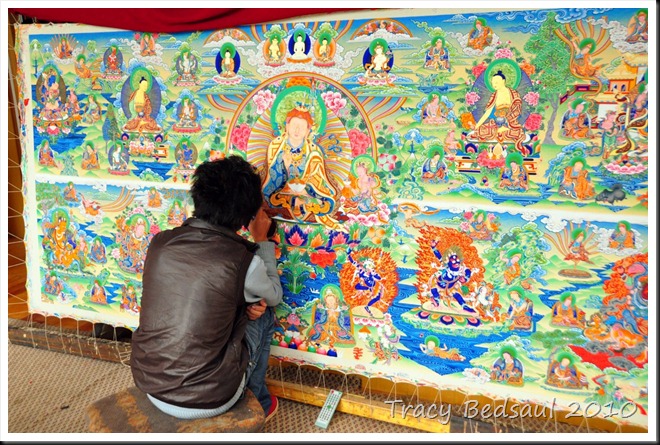
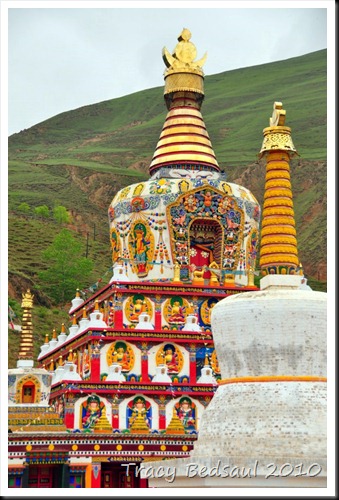
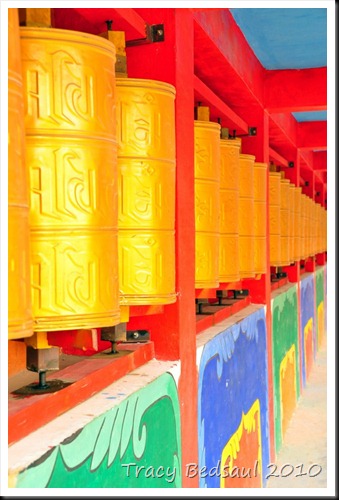
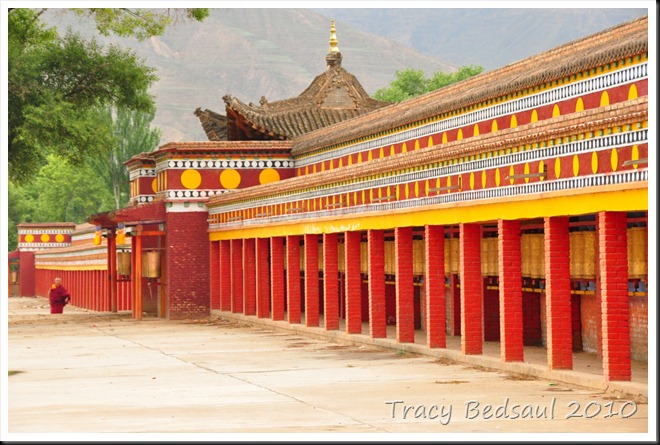
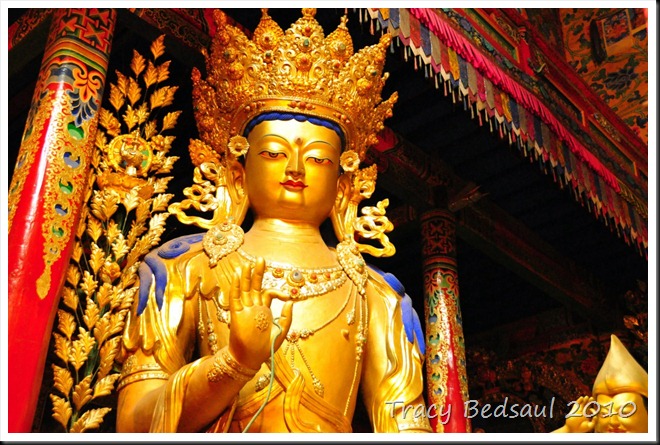
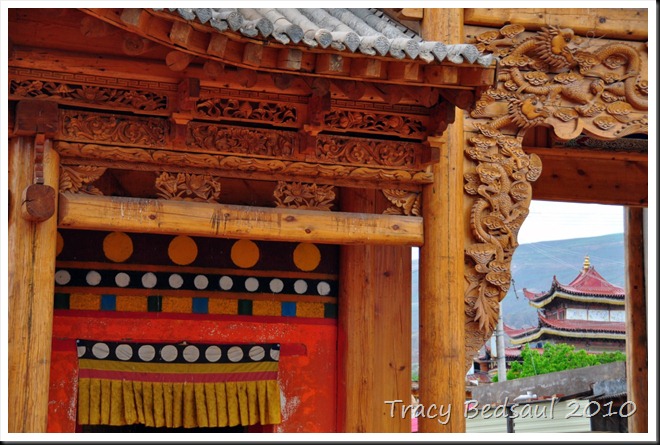
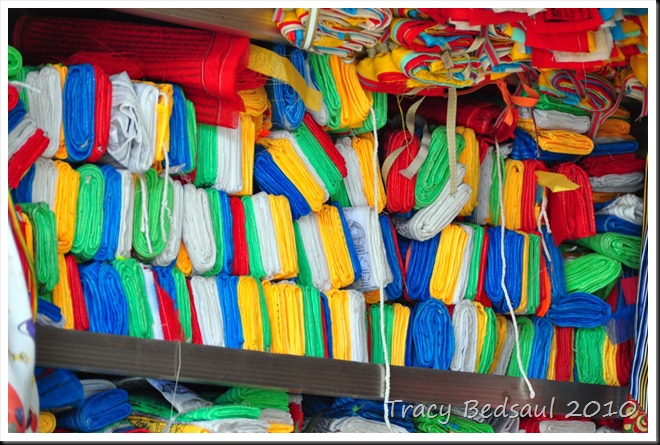
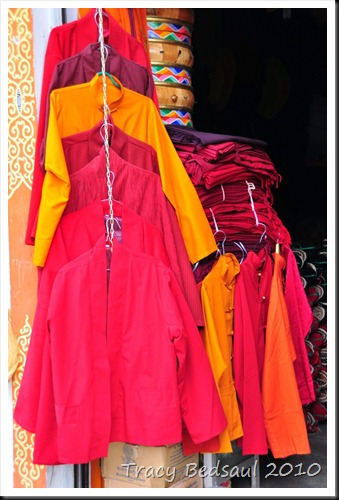
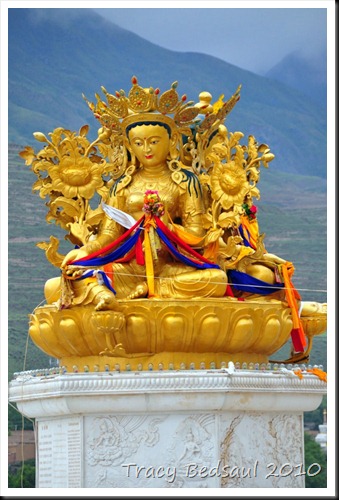
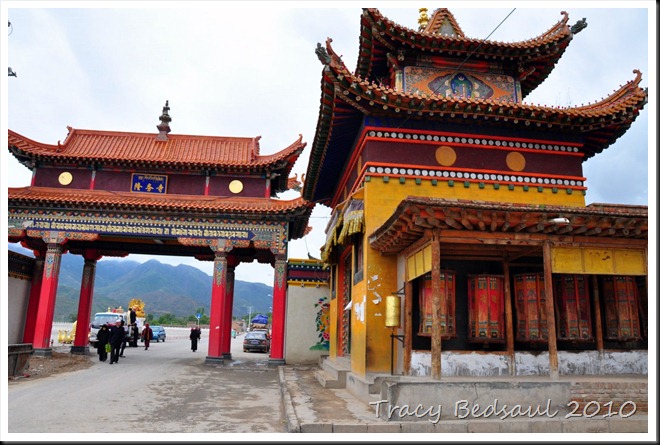
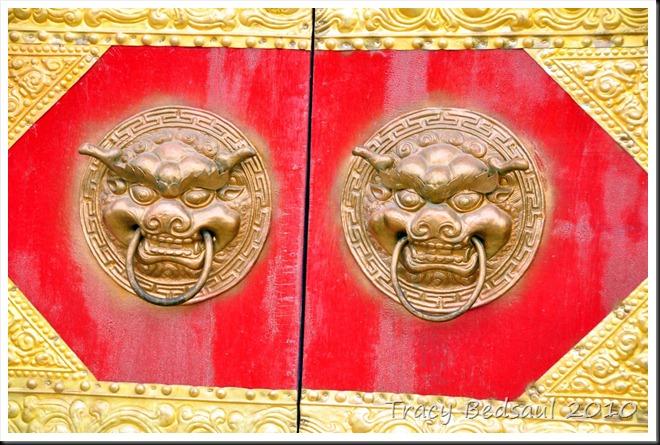
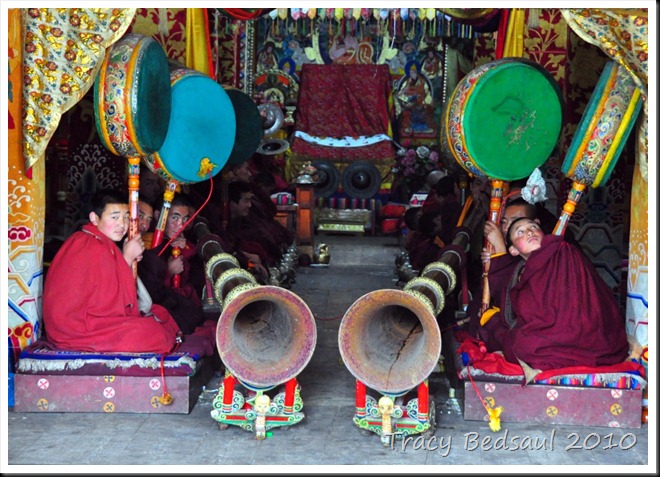
![DSC_5677_thumb[11] DSC_5677_thumb[11]](http://lh6.ggpht.com/-Ra7xEEBBh_0/TezyWa1AG6I/AAAAAAAAG3E/JzWo0UwSIbM/DSC_5677_thumb11_thumb.jpg?imgmax=800)
![DSC_5627_thumb[9] DSC_5627_thumb[9]](http://lh4.ggpht.com/-8w0b8yHimJs/TezyhHIjj5I/AAAAAAAAG3M/tgN6xxeFwWk/DSC_5627_thumb9_thumb.jpg?imgmax=800)
![DSC_5635_thumb[9] DSC_5635_thumb[9]](http://lh3.ggpht.com/-Dzbzffnxwlg/TezyjNPOZuI/AAAAAAAAG3U/TONk-Bptnyc/DSC_5635_thumb9_thumb.jpg?imgmax=800)
![DSC_5654_thumb[12] DSC_5654_thumb[12]](http://lh3.ggpht.com/-qsddvkw424M/TezylPbGn_I/AAAAAAAAG3c/jrb8tT18bvk/DSC_5654_thumb12_thumb.jpg?imgmax=800)
![DSC_5666_thumb[7] DSC_5666_thumb[7]](http://lh4.ggpht.com/-t1jnLdrapOo/TezyqfZapHI/AAAAAAAAG3k/1-nLs8hejIM/DSC_5666_thumb7_thumb.jpg?imgmax=800)
